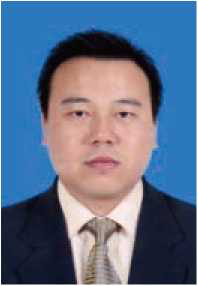Feng Liu *
Northwestern Polytechnical University, China
EXTENDED ABSTRACT: Heat treatment processing in metals through phase transformations (PTs) determines the microstructure of materials, thermodynamics and kinetics as the key theories to guide the regulation of PTs; whereas, plastic deformations (PDs) will show the strength and plasticity, and deformation mechanism or dislocation thermo-kinetics upon PDs reflect mechanical properties, i.e., strength and plasticity. Themodynamics and kinetics (themo-kinetics) connects PTs and PDs, where, both PTs and PDs can be unifbmed described as the kinetic behaviors of atoms triggered by thermodynamics driving force AG. Both of the microstructure (phase) stability and mechanical stability, which determine the difficulty of PTs or PDs, can be herein defined as the thermodynamic stability (TS); however, it couldn't correspond to the non-equilibrium kinetic processes of PTs and PDs, that is to say, classical thermodynamic lacking kinetic information. Thermodynamics reflects the PTs triggered by the AG, kinetics shows the rate of PTs but actually perfbnned in the sustainability of PTs, as that controlled by the kinetic energy barrier Q; essentially, this shows the concept of thermo-kinetic correlation, i.e., themo- kinetic synergy or "trade-ofF', proposed by the authors recently, which has been verified, described and applied to PTs in a variety of alloy systems. According to dislocation thermo-kinetics, the so-called thermo-kinetic correlation physically corresponding to origin of the phenomenon of strength and plasticity <<trade-off\ The universal theory or law of connecting composition/process-structure-property seems equivalent to the mathematical model implying the intrinsic AG (i.e., chemical driving force and strain energy ) and the Q (i.e., interfacial diffusion, bulk diffusion and shear) fbr PTs, as well as AG (i.e., corresponding flow stress ) and Q (i.e., dislocation density reflected by dislocation interaction with grain boundaries, solutes, precipitates and dislocation itself) fbr dislocation evolution, that is, generalized stability (GS) based on so-called thermo- kinetic correlation. The selection of different PTs or PDs mechanisms corresponds to the adjustment of the thermo-kinetic correlation under different patterns, which is fundamentally corresponding to the regulation of AG and kinetic process through composition and process design. The purpose is to regulate the TS and GS, and then adjust the balance of hardening and softening.
Keywords: Metal material design; Phase transformations and plastic deformations; Thermo-kinetic correlation; Thermodynamic stability; Generalized stability

西北工业大学教授,中国科协全国委员。研究方向是,基于热力学和动力学的 结构材料设计。国家杰青,“长江”特聘教授,"百千万人才”工程国家级人选,中 国青年科技奖,中青年科技创新领军人才,国务院政府特殊人才津贴,中组部 万人计划领军人才;陕西省科学技术一等奖,教育部自然科学一等奖。《JMST》 和《自然科学进展》等国内著名期刊编委。